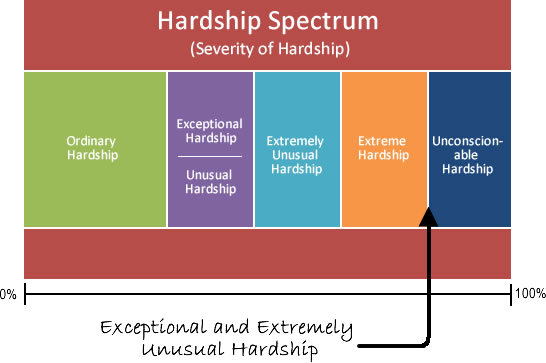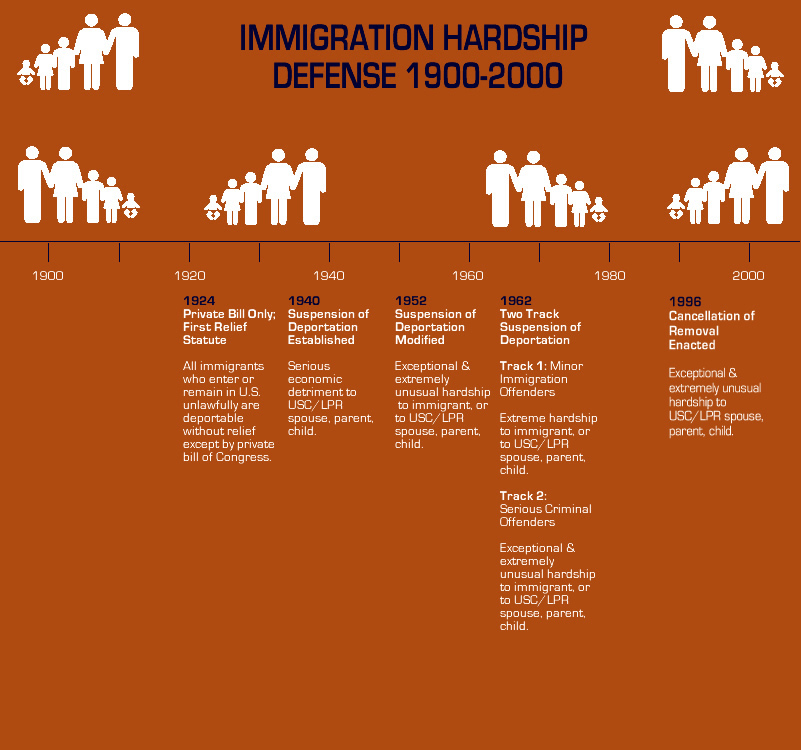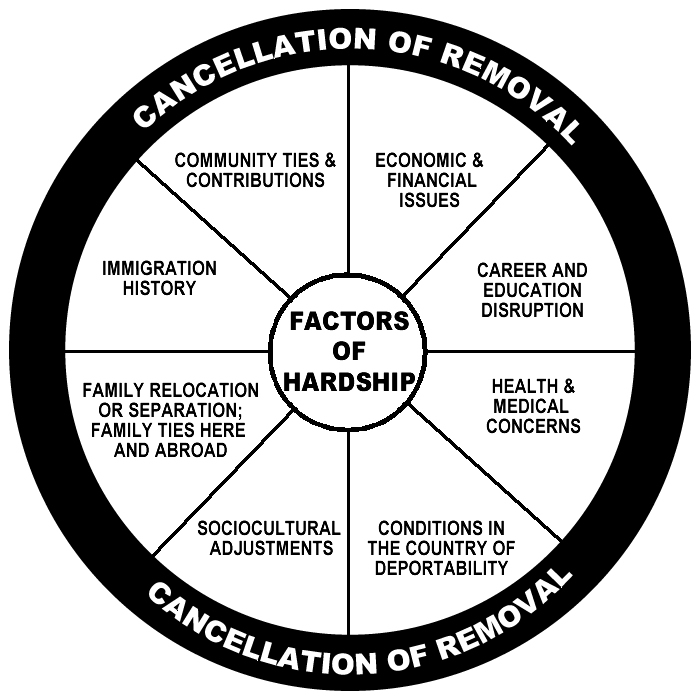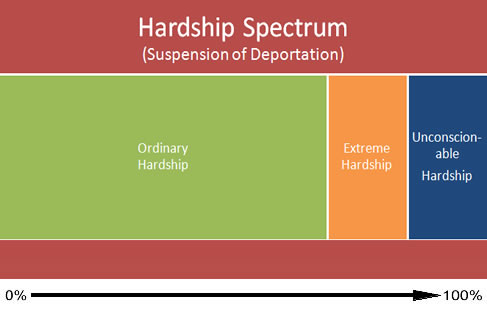
April 1, 1997.
The day IIRAIRA went into effect.
The day we entered the Age of Immigration Darkness.
Call Today:


April 1, 1997.
The day IIRAIRA went into effect.
The day we entered the Age of Immigration Darkness.

It makes many sick to their stomach and want to gag.
It can take years, if ever, for the agony to subside. The hurt gets into your soul, lingering in the backdrop to your daily activities, and there’s no running away from the incessant mental anguish.
Deportation is unforgiving.
For spouses of immigrants, the moment a husband or wife is ordered to be deported is similar to the fateful juncture when a loved one is declared deceased.
They must instantly begin to address and undergo emotionally painful adjustments in their lives they were hoping to never experience.
Deportation – like death – rearranges lives permanently.

“Congress,” Justice Stevens once wrote, “like Humpty Dumpty, has the power to give words unorthodox meanings.”
So does the Board of Immigration Appeals.
Like exceptional and extremely unusual hardship.
I have few doubts, based on my experience as a San Diego immigration attorney in the 1990s, a Gingrich-led Congress wanted to impose a higher standard.
Yet, as Humpty Dumpty would tell both Congress and the BIA, the chosen words fall short.
This blog post is Part 4 of our Mini-Series On Cancellation Of Removal for non-lawful permanent residents, an important component of our deportation defense services.

The limits of prosecutorial discretion have been revealed.
According to the New York Times, only 16% of immigrants facing deportation hearings at immigration court are being granted temporary refuge from immediate prosecution.
The suspended hearings can be reopened at any time.
Deportation proceedings in one year, two years, three years can begin anew.
This blog post is Part 3 of our Mini-Series On Cancellation Of Removal for non-lawful permanent residents, an important component of our deportation defense services.

“Torn Apart,” blared the Riverside Press Enterprise. A front page story, the article described a family’s ordeal, whose mother was deported to her home country a few weeks earlier.
The woman, age 31, had lived in the United States since age 2. She was brought here by her parents, along with her brother, in 1979 with valid border crossing cards. The family was supposed to leave. Instead, they stayed.
Today, the woman is married to a U.S. citizen. She has four U.S. citizen children, three from a previous relationship. Her parents are U.S. citizens.
Before she was deported, she sought Cancellation of Removal. She lost at her immigration trial, and then lost an appeal.
The story is common to most immigrant communities across the nation.
This blog post is Part 2 of our Mini-Series On Cancellation Of Removal for non-lawful permanent residents, an important component of our deportation defense services.

In 1996, as part of the Illegal immigration Reform and Immigrant Responsibility Act (IIRAIRA), Congress tightened the hardship formula in deportation court cases involving immigrants lacking legal authority to reside here.
The change, though creating a supposedly more rigorous standard of judicial review, did not eliminate that hardship factors must still be assessed under a totality of the circumstances test.
However, it did affect the permutation of direct and indirect hardship factors necessary for relief from removal.
This blog post is Part 1 of our Mini-Series On Cancellation Of Removal for non-lawful permanent residents, an important component of our deportation defense services.

Time and time again, immigrants facing deportation are baffled when I explain their family’s hardship may not be strong enough to win their Cancellation of Removal case.
“I’m the main breadwinner,” they explain. “If I’m not here, how will my wife be able to pay the house bills, feed my kids, and keep them clothed?”
“Isn’t this hardship?”
“Yes, it is,” I explain, “but for immigrants living here without permission, hardship under Cancellation of Removal means the worst of the worst situations.”

Newt Gingrich as the new savior of immigration?
Bah! Humbug!

Facing deportation at immigration court, many undocumented immigrants learn about a “hardship” defense for the first time.
So what is hardship?
For most lawyers, it’s an easy concept to grasp. But difficult to explain.
In short, it means the negative effects which a person will experience if a loved one is removed from the United States. It’s the amount of suffering a parent, child, or parent will go through after an immigrant is deported or removed from the United States.